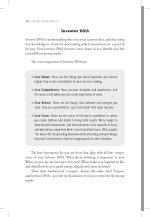narseman
Well-known member
I didn't really know what to call this. The issue when you have an image in a PDF that bleeds. But then one edge of the image is clipped off at the crop mark (vertically), and shows up on the next page.
Is this an InDesign issue? I see it all the time with submitted files. We have the same problem here too.
Our normal InDesign process is to save a PS file which is then distilled to produce the PDF. Which results in the mentioned issue.
Does anyone have any input as to how this can be avoided? Is it Indesign screwing up, the PS process, or the distillation??
I know you all have had this issue pop up.. But what to do about it, is the question.
Is this an InDesign issue? I see it all the time with submitted files. We have the same problem here too.
Our normal InDesign process is to save a PS file which is then distilled to produce the PDF. Which results in the mentioned issue.
Does anyone have any input as to how this can be avoided? Is it Indesign screwing up, the PS process, or the distillation??
I know you all have had this issue pop up.. But what to do about it, is the question.















